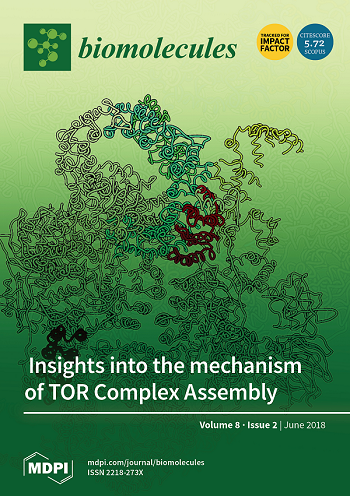正常组织和乳腺癌中包膜生长因子替代剪接变体的表达
IF 4.8
2区 生物学
Q1 BIOCHEMISTRY & MOLECULAR BIOLOGY
引用次数: 0
摘要
(1) 背景:表皮生长因子(Periostin,Pn)是一种存在于细胞外基质中的分泌蛋白,在人体内发挥着多种作用。在生理学上,Pn 具有多种功能,包括骨形成和伤口愈合。然而,它也与各种恶性肿瘤和慢性炎症性疾病的发病机制有关。Pn 具有替代剪接变体(ASVs),我们之前的研究发现,异常的 ASVs 会导致乳腺癌和心力衰竭的发病。然而,生理表达的 Pn-ASV 与发病过程中表达的 Pn-ASV 在表达模式上的差异尚不清楚。(2)方法和结果:我们研究了正常组织和乳腺癌组织,重点关注 Pn-ASVs 的表达模式,以评估病理表达的 Pn-ASVs 作为潜在诊断和治疗靶点的意义。我们发现,大多数生理表达的 Pn 异构体缺乏第 17 和 21 号外显子。接下来,我们利用人类乳腺癌和正常邻近组织(NAT)研究了病理条件下 Pn-ASVs 的表达模式。与 NAT 相比,带有 21 号外显子的 Pn-ASV 在肿瘤组织中明显增加。原位杂交发现,带有 21 号外显子的 Pn-ASVs 在肿瘤周围基质细胞中合成。此外,89Zr 标记的抗 21 号外显子的 Pn 抗体(Pn-21Ab)在乳腺癌小鼠体内的生物分布显示了在肿瘤中的选择性和特异性蓄积,而 Pn-21Ab 能显著抑制小鼠乳腺癌模型中的肿瘤生长。(3)结论:这些数据表明,Pn-ASVs 有可能成为乳腺癌的诊断和治疗靶点。本文章由计算机程序翻译,如有差异,请以英文原文为准。
Expression of Periostin Alternative Splicing Variants in Normal Tissue and Breast Cancer
(1) Background: Periostin (Pn) is a secreted protein found in the extracellular matrix, and it plays a variety of roles in the human body. Physiologically, Pn has a variety of functions, including bone formation and wound healing. However, it has been implicated in the pathogenesis of various malignant tumors and chronic inflammatory diseases. Pn has alternative splicing variants (ASVs), and our previous research revealed that aberrant ASVs contribute to the pathogenesis of breast cancer and heart failure. However, the difference in expression pattern between physiologically expressed Pn-ASVs and those expressed during pathogenesis is not clear. (2) Methods and results: We examined normal and breast cancer tissues, focusing on the Pn-ASVs expression pattern to assess the significance of pathologically expressed Pn-ASVs as potential diagnostic and therapeutic targets. We found that most physiologically expressed Pn isoforms lacked exon 17 and 21. Next, we used human breast cancer and normal adjacent tissue (NAT) to investigate the expression pattern of Pn-ASVs under pathological conditions. Pn-ASVs with exon 21 were significantly increased in tumor tissues compared with NAT. In situ hybridization identified the synthesis of Pn-ASVs with exon 21 in peri-tumoral stromal cells. Additionally, the in vivo bio-distribution of 89Zr-labeled Pn antibody against exon 21 (Pn-21Ab) in mice bearing breast cancer demonstrated selective and specific accumulation in tumors, while Pn-21Ab significantly suppressed tumor growth in the mouse breast cancer model. (3) Conclusions: Together, these data indicate that Pn-ASVs might have potential for use as diagnostic and therapeutic targets for breast cancer.
求助全文
通过发布文献求助,成功后即可免费获取论文全文。
去求助
来源期刊

Biomolecules
Biochemistry, Genetics and Molecular Biology-Molecular Biology
CiteScore
9.40
自引率
3.60%
发文量
1640
审稿时长
18.28 days
期刊介绍:
Biomolecules (ISSN 2218-273X) is an international, peer-reviewed open access journal focusing on biogenic substances and their biological functions, structures, interactions with other molecules, and their microenvironment as well as biological systems. Biomolecules publishes reviews, regular research papers and short communications. Our aim is to encourage scientists to publish their experimental and theoretical results in as much detail as possible. There is no restriction on the length of the papers. The full experimental details must be provided so that the results can be reproduced.
 求助内容:
求助内容: 应助结果提醒方式:
应助结果提醒方式:


